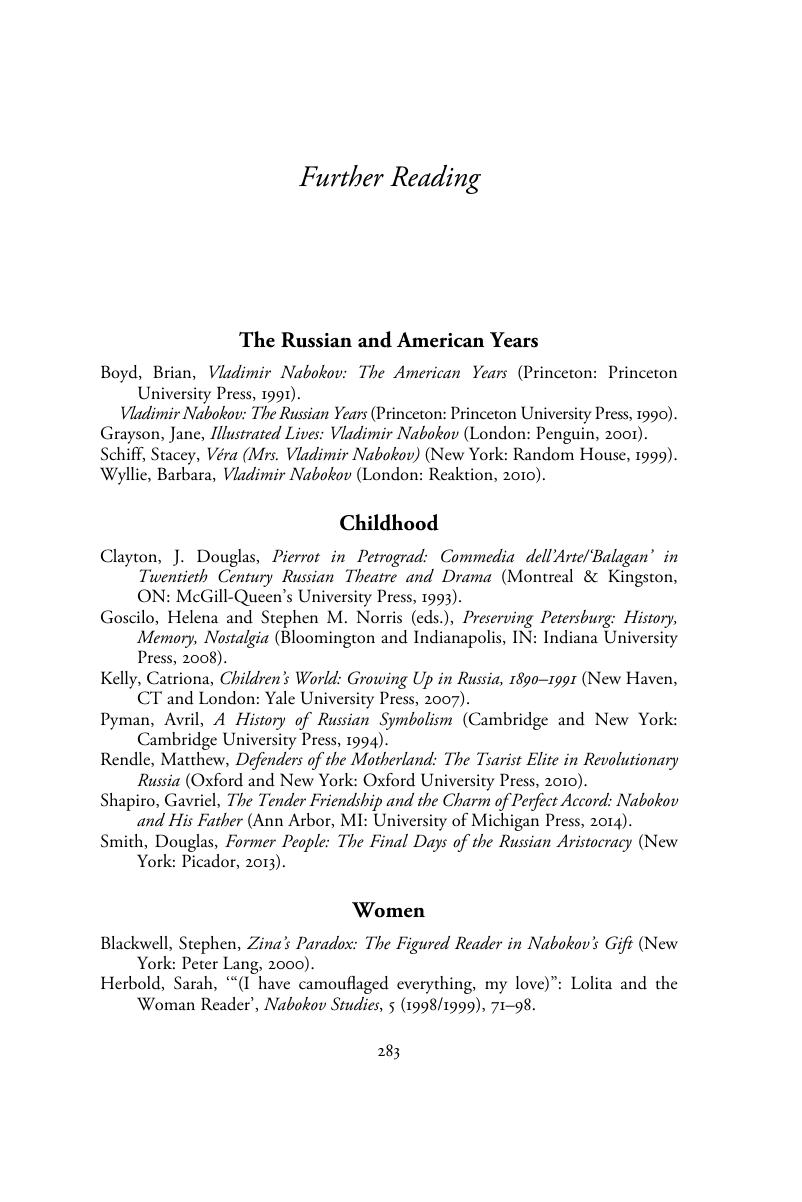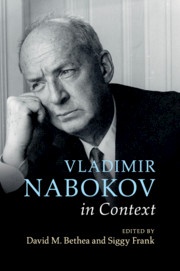Book contents
- Vladimir Nabokov in Context
- Vladimir Nabokov in Context
- Copyright page
- Contents
- Illustrations
- Contributors
- Acknowledgements
- Note on Transliteration and Dates
- Abbreviations
- Contextualising Nabokov
- Part I Identity
- Part II Places
- Part III Literatures and Arts
- Part IV Ideas and Cultures
- Further Reading
- Index
- References
Further Reading
Published online by Cambridge University Press: 16 May 2018
- Vladimir Nabokov in Context
- Vladimir Nabokov in Context
- Copyright page
- Contents
- Illustrations
- Contributors
- Acknowledgements
- Note on Transliteration and Dates
- Abbreviations
- Contextualising Nabokov
- Part I Identity
- Part II Places
- Part III Literatures and Arts
- Part IV Ideas and Cultures
- Further Reading
- Index
- References
Summary

Information
- Type
- Chapter
- Information
- Vladimir Nabokov in Context , pp. 283 - 293Publisher: Cambridge University PressPrint publication year: 2018
